“Life is a pilgrimage. The wise man does not rest on the roadside inns. He marches directly to the illimitable domain of eternal bliss, his ultimate destination.” Swami Sivananda
My mobile kept dropping the call from the tourist office but I was nearly home. From the corner of my eye I saw a character straight from one of my favourite sitcoms, The Golden Girls. She looked much like Betty White carrying a ratty pack on her back giving the impression of a slow moving turtle. She walked in worn Greek sandals, her grey hair a skew with a walking stick in each hand methodically planting them in front of each foot making her way up town. She looked lost. I slowed down to ask her if she needed some help when I noticed her red lipstick. I instantly liked this person! She said she was on her way to Santiago de Compostela to visit the holy shrine of Saint James. This would be my first encounter with a pilgrim and she was looking for a B&B on Rue Louis Aragon. As luck would have it, she was looking for me!
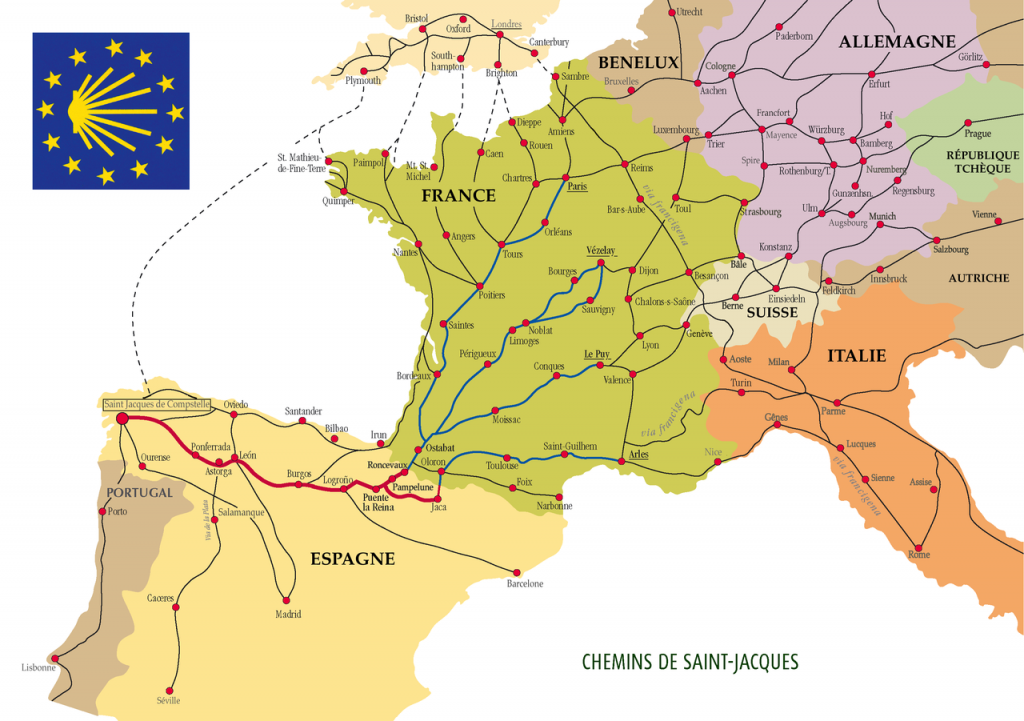
Encountering Pilgrims on the Camino
Steady streams of pilgrims have visited us ever since that first meeting. Among the most memorable was an Australian banker on a month sabbatical searching for the meaning of life after he reached burn out, a Belgian woman doing the entire length of the Camino for the second time within a year as an homage to her late husband, and a very rich man wanting to know what it was like to solely rely on the generosity of strangers to get from one end of the Saint James path to the other. I happily obliged and did not charge him, even though his gear alone was worth more than my car. C’est la vie! And lastly there was the charismatic man who resembled Jesus Christ himself with a full beard and long hair looking far older than his 32 years on earth. With holes in his shoes he searched for freedom. After our lengthy conversation, I think he had already found it. I can’t help think of the song, What If God Was One Of Us? every time I think of the pilgrims of Santiago de Compostela.
I have packed leftovers for students walking the route with little money, made vegetarian lentils and hummus for a group of Indian Buddhists who couldn’t find good vegetarian food on route, and made sandwiches for people whom I wished would stay for more conversation. Tears have streamed down my face both from hearing tragic tales of heartache, gutwrencher love stories and terminal illness, but also during robust bursts of laughter sharing funny stories over a glass of Languedoc wine.
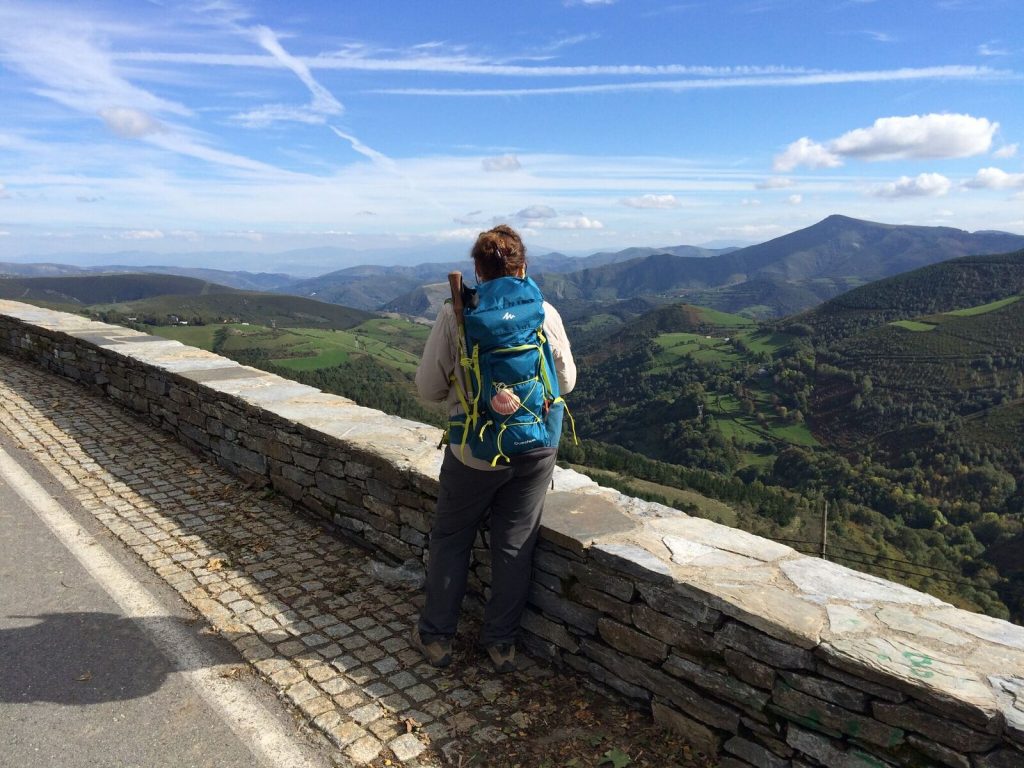
The common thread among these amazing people was the El Camino. Fewer of them seem devoted to God (or even Catholic) and more seem to be folks ticking ‘The Way of Saint James’ off their bucket lists. It is an interesting way for backpackers to experience the French and Spanish countryside. It takes you to villages with beautiful churches, along medieval ruins and through breathtaking countryside. Surprisingly, many do it alone. I rarely hear back from these travellers, of course not- they only stay for the night, but I collect their stories in my memory, both for future reference and for inspiration. I learned something from each of these wanderers as they briefly warmed my life.
They have ignited a new dream in me to also walk to Santiago de Compostela in Spain.
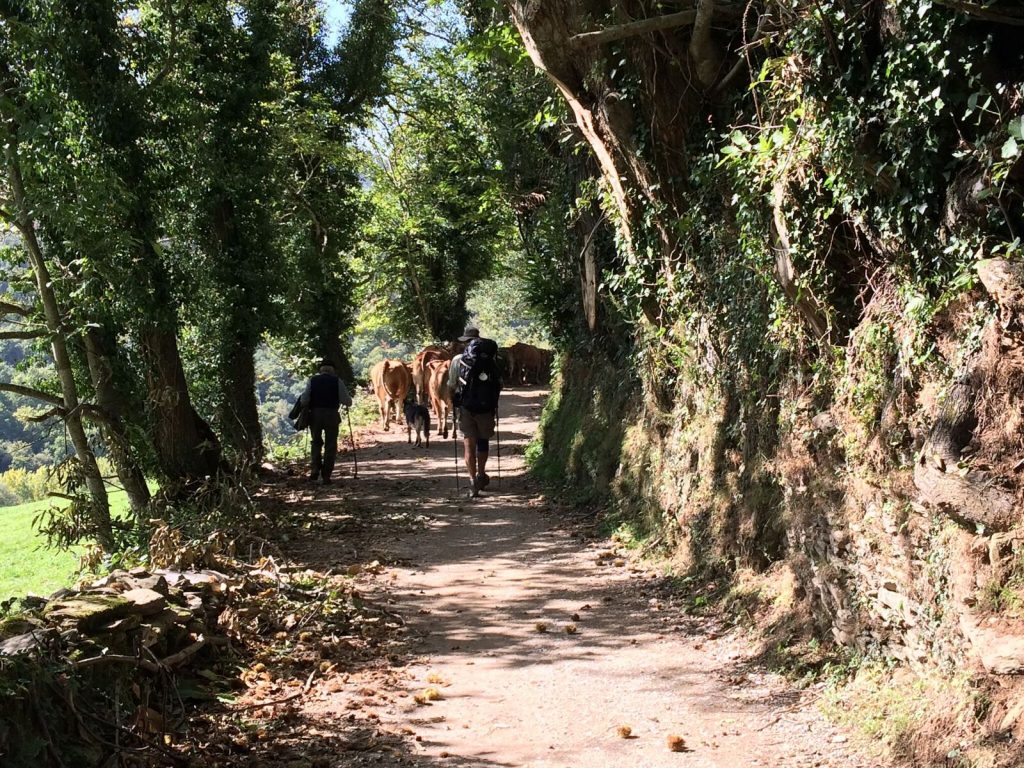
Interview with Clare and Steve Patrick from the UK
Where did you start and finish the Camino?
We did the Camino de Santiago just this past fall. The walk took six weeks starting in St. Jean Pied de Port and followed “The Way of St James” to Santiago de Compostela. However, we didn’t stop there but continued on to Muxia and Finisterre on the Atlantic coast. A total distance of 900 Kms.
What were your reasons for doing the Camino?
Clare wanted a big challenge and to raise money for the Alzheimer’s Society, a condition her mother suffered from and subsequently died of 3 years earlier. She raised nearly £3,000 (€4,000)
Donations can be made direct to the Alzheimers Society via www.alzheimers.org.uk/donate
Were accommodation easy to find and did you book long in advance?
We set out from St Jean Pied de Port at the beginning of September last year, and although accommodation is plentiful along the entire route, because this time of year is very popular because of the favourable weather, places to stay became more difficult to find. We hadn’t booked any accommodation in advance, as generally there is no need to, but because it was so busy, we started to make reservations for up to a week ahead after we had set off. This wasn’t a problem as most places along the way offer free wifi.
Did you use certain Websites to help with your pilgrimage along the Santiago de Compostela route?
There are several forums about the Camino on the Internet and which are a great source of information. A couple we used are listed below.
What did you gain from doing the Camino and how would you describe your experience?
I think the most important thing we learnt from the walk was that a big challenge needn’t be so daunting. Just takes a little longer. It also made us realise just how many good people there are out there. We met so many fellow pilgrims from across the globe, that we walked with, talked with, ate and drank with, many of whom we have kept in touch with and have now become good friends.

Capestang and the Camino de Santiago
Before moving to Capestang, our family only knew of the Camino from a movie called ‘The Way’ starring Martin Sheen. I related the story to my own journey of self-discovery.
It is often referred to as The Way of Saint James and, in France it is Les Chemins de Saint-Jacques-de-Compostelle. However, most commonly, it’s simply called, The Camino after the Camino Francés – The Way of the French.
In the past Capestang was passed by two registered paths that went around our little village on route to Santiago de Compostela. We missed out on many pilgrims so close to us. Four and half years ago I added our gite, Le Petit Platane, to the Santiago de Compostela website and received dozens of lovely visitors who detoured along the Canal du Midi to visit our beautiful church along broken paths. Many knew the history of our collegial and wanted to visit the Canal du Midi. The municipality hopes that by connecting these two routes directly to us, (creating a circle) and registering with the Santiago de Compostela, that the paths will be now clearly marked using the correct shell signage and yellow arrows, bringing the pilgrims to our lovely collegial and village along The WAY!
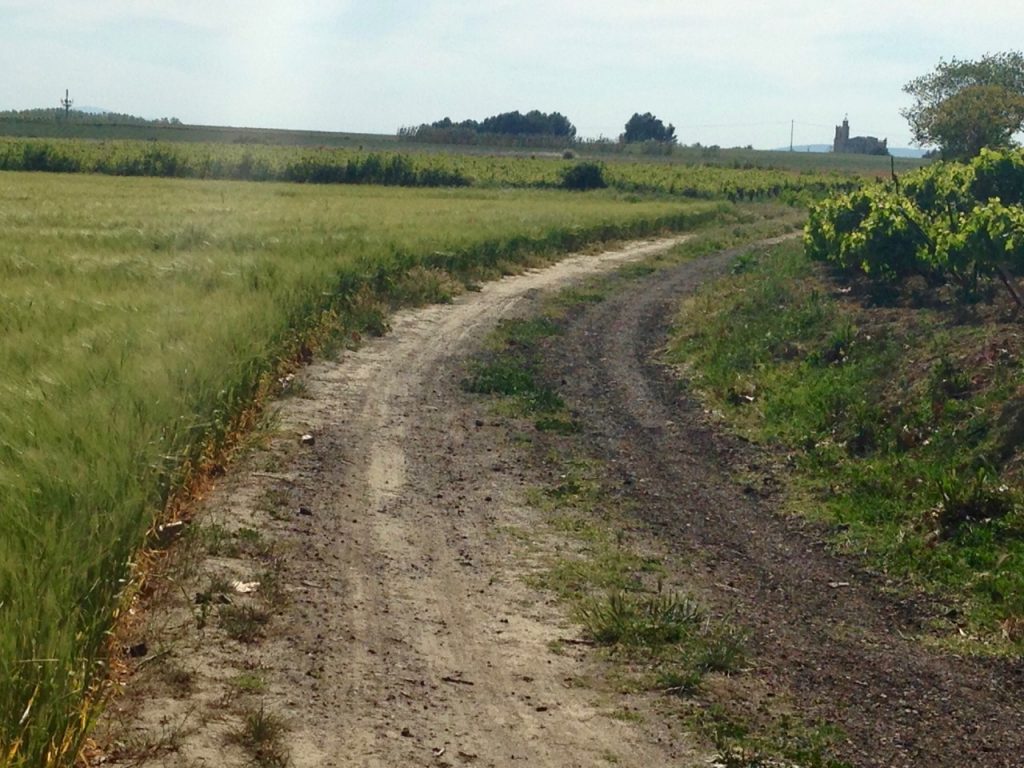
The Village of Capestang is now officially part of the Santiago de Compostela on the route from Montpellier to Toulouse, called “The Way of the Foothills” “La Voie des Piémonts” which then enters Northern Spain through the bordering Pyrenees Mountains. Like the Canal du Midi which connects the Mediterranean Sea to the Atlantic Ocean, so does The Way of the Foothills. This pedestrian bridge unites Italy to Spain through France; an important part of the Camino no matter which way to walk it.
This region is a beautiful leg of the walk offering 100 hours over 479 km through breathtaking scenery of the Mediterranean Sea, walking over rolling vine covered hills, and along the Canal du Midi straight across France.

Our town hall has just received our Pilgrimage stamp to show proof of the pilgrim’s passage through our village, which is available at our tourist office, the town hall, our church and our castle. This entitles travellers to stay in “Albergue’ ‘Pilgrim Only” hostels on route, and also special pilgrim meals at some local restaurants.
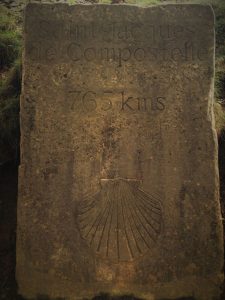
The Camino Frances
The French route, called the Camino Frances, starts at St. Jean Pied de Port on the French side of the Pyrenees and finishes 780 km later in Santiago de Compostela Spain. The route is broken down into 32 stages with accommodations and food easily accessible.
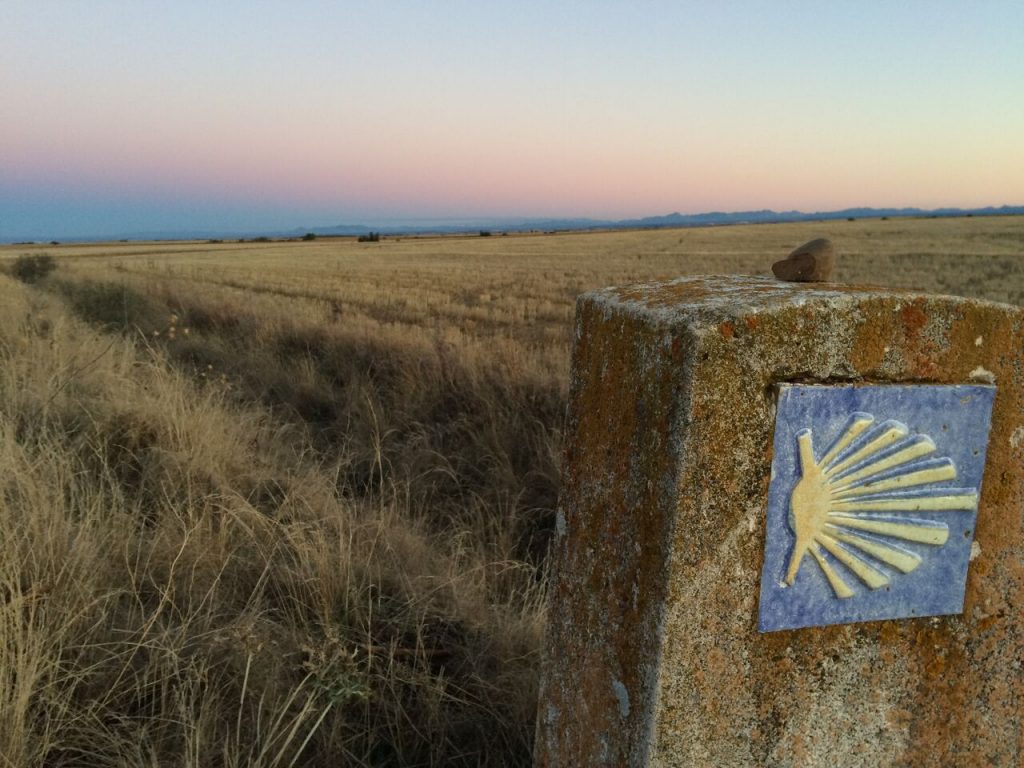
Pilgrims follow bright yellow arrows and scallop shell signs along the walking paths, and they stamp their passports at each stop. The passport ends up a treasure to the pilgrim, reminders of the villages and countryside they have travelled over, and of course the remarkable people they met along the way.
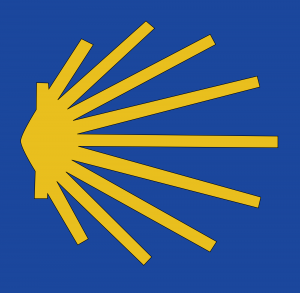
The Significance of the Scallop Shell
There are many theories as to why the scallop shell has become the significant symbol of the Santiago de Compostela. The most practical for me are that the grooves on the shells naturally create lines that point from many different directions to one destination, sort of a small map and reminder of where you are heading. Other practical reasons are that pilgrims can use this to drink water from.
Religious Reasons vary between Two Miracles
The first miracle was said to have happen to the ship that brought Saint James’ remains to the Atlantic coast. It was lost at sea on route and said to have washed up on shore undamaged and covered in scallop shells. The second version of this miracle was that when the angel driven ship arrived to the shores of the Iberian Peninsula a wedding was taking place with the groom on horse back. They got spooked and the horse and man plummeted into the sea, but through divine intervention he was saved. They both emerged from the water covered in scallop shells and remained unharmed.
Who was Saint James?
James, son of Zebedee, was the patron saint of Spain who was one of Jesus’s disciples, brother of disciple John and the first to die a martyr. His remains are said to be buried in Santiago de Compostela, Spain, and once discovered, King Alfonso II built the cathedral over it in 829 AD after an account of a miracle on that exact spot was said to have occurred. The king was the first pilgrim to visit the shrine.
Since the Early Middle Ages, people from around the world go on the pilgrimage crossing Europe to make their way to Spain. The different well trekked routes branch throughout Western Europe and all roads lead to one destination through Northern Spain. The old town of Santiago is also a UNESCO World Heritage Site.
For the Catholic faith the Santiago pilgrimage route remains an indulgence to reduce the amount of punishment one has to undergo for their sins.
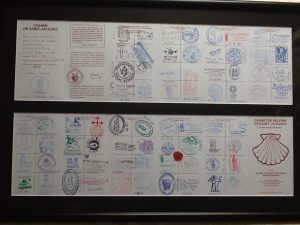
How to get your Pilgrim Passport and Compostela Certificate
To receive the Compostela Pilgrimage Certificate of completion from the Pilgrim’s office in Santiago Spain, you must either walk a minimum of 100km to Santiago Spain or cycle 200km with valid dates and stamps in your pilgrim passport to prove it.
To obtain your Pilgramgae Passport please visit https://www.santiagodecompostela.me/
Isn’t it time to put Santiago de Compostela on your bucket list?
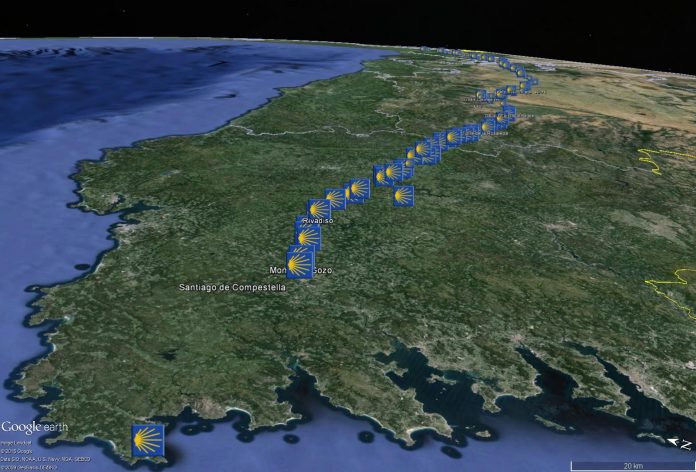



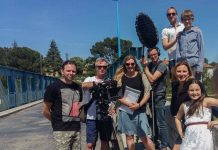



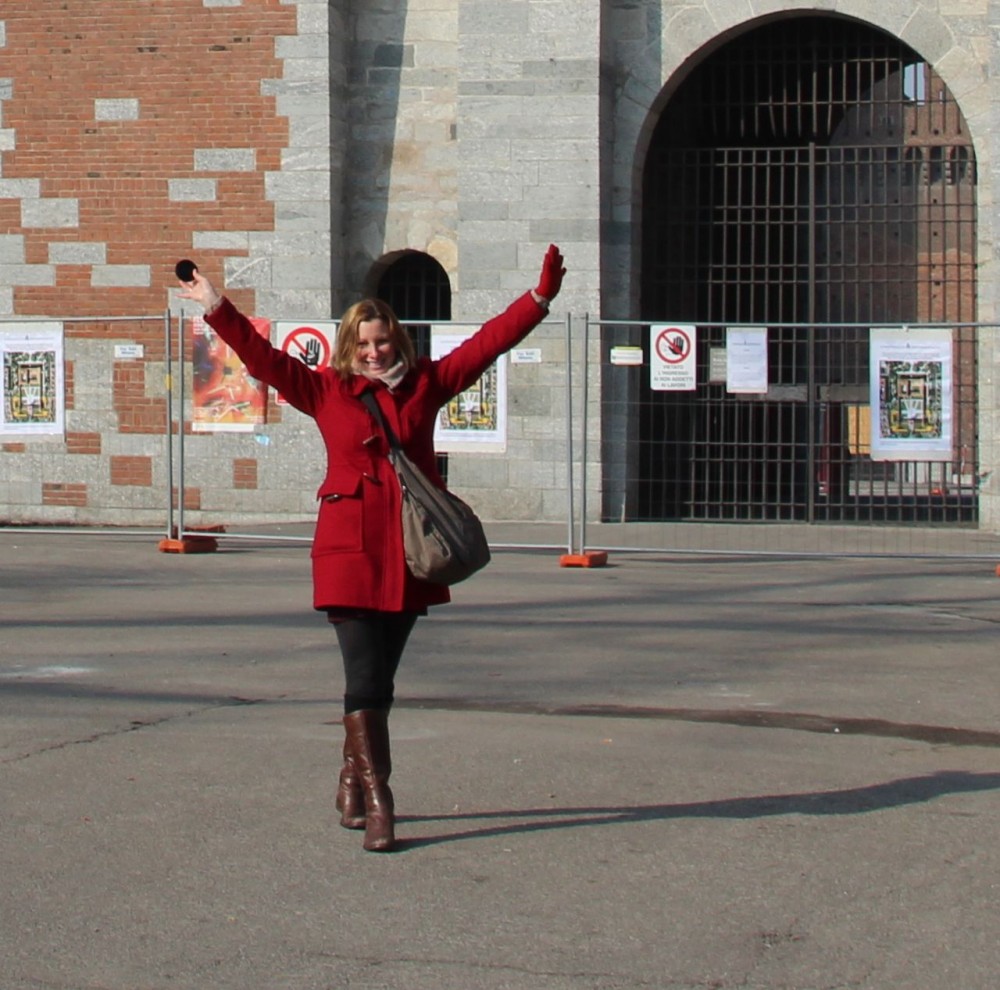




[…] can read more about the history of the camino and find resources on Eva’s article, “Santiago de Compostela Way.” Eva plans to walk the Camino herself some day, following in the footsteps of other […]
[…] can read more about the history of the camino and find resources on Eva’s article, “Santiago de Compostela Way.” Eva plans to walk the Camino herself some day, following in the footsteps of other Languedoc […]